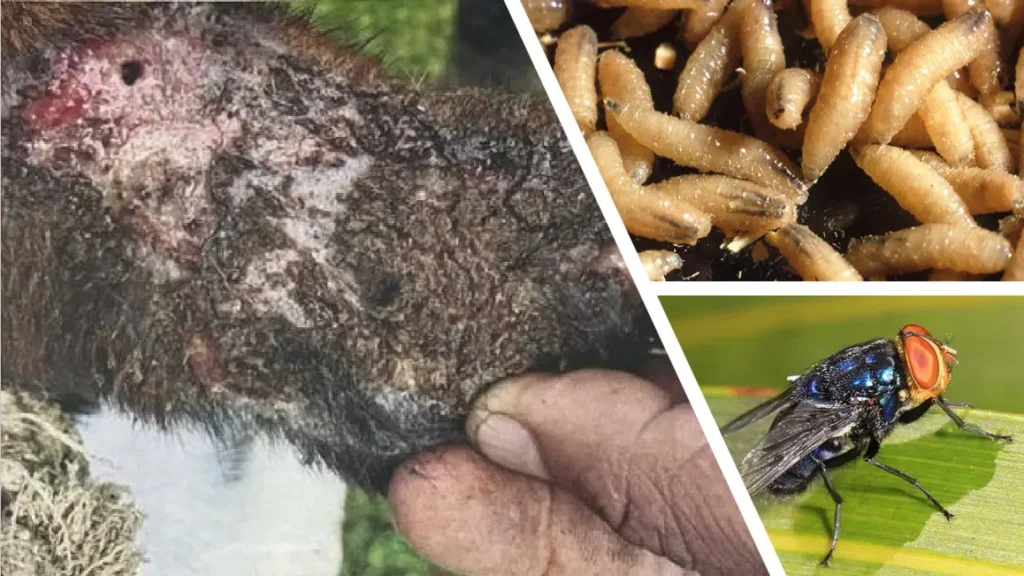U.S. Records First Human Case of Flesh-Eating Screwworm Parasite, HHS Warns

In a startling health development, U.S. officials have confirmed the nation’s first-ever human case of the perilous New World screwworm parasite, marking a rare incursion of the flesh-eating threat into the continental United States. The case was identified earlier this month in Maryland and traced to travel from Central America—prompting concern from medical professionals and livestock authorities alike.
A Rare Infection Surfaces in Maryland
The U.S. Department of Health and Human Services (HHS) confirmed on August 25 that a Maryland resident was diagnosed with Cochliomyia hominivorax, commonly known as the New World screwworm. This confirmed infection, considered the first travel-related human screwworm case in decades, was verified by the Centres for Disease Control and Prevention (CDC) on August 4 through telediagnosis after analysing images of larvae. The patient recently returned from El Salvador, although some reports suggest Guatemala as the origin. (Reuters, Axios)
Despite the severity of the parasite—whose larvae feed aggressively on living tissue—health officials emphasise that the risk to the broader U.S. population remains very low, as no animal cases have been reported domestically in 2025. (Reuters, The Economic Times, Axios)
Understanding the New World Screwworm Parasite
The New World screwworm fly is a parasitic blowfly whose larvae invade open wounds and feed on living tissue—a condition medically known as myiasis. Unlike most maggots, which consume dead tissue, screwworm larvae attack healthy flesh. The parasite was eradicated from the U.S. by 1966 through the pioneering Sterile Insect Technique (SIT), which involved releasing sterilised male flies to suppress reproduction. (Wikipedia, Congress.gov, ScienceAlert)
Recent years, however, have seen a resurgence, starting south of the border in Panama and progressing through Central America. By mid-2025, several countries reported human cases, including 30 in Nicaragua, dozens in Costa Rica and Honduras, and new infections in Mexico and Belize, with the first confirmed human case in Belize occurring earlier this month. (Yahoo, 9News, greaterbelize.com, CNW Network, breakingbelizenews.com)
Why This Case Matters in the U.S.
Though rare, this infection has ignited concern across public health, agricultural, and economic sectors, particularly in light of the screwworm’s capacity to devastate livestock herds. The USDA estimates a potential outbreak in Texas could result in up to $1.8 billion in losses, underscoring the parasite’s threat. (Reuters)
In response, Agriculture Secretary Brooke L. Rollins unveiled a sweeping containment strategy, including:
- Constructing a sterile fly production facility in South Texas capable of generating up to 300 million flies weekly.
- Employing detector dogs and “Tick Riders” for field surveillance along the border.
- Temporarily suspending livestock imports from high-risk regions.
- Allocating substantial research funds for genetic sterilisation and rapid diagnostic technologies.
- Collaborating with Mexican authorities and investing in a facility south of the border for broader regional containment. (MRT, MySA, Reuters)
From Central America to Maryland: A Regional Wake-Up Call
The rise of screwworm cases across Central America serves as a warning of how quickly the parasite can spread. Experts cite the collapse of protective barriers—geographic and biological —as the parasite migrates northward. Whether via livestock movement or environmental shifts, this resurgence signals that the insect’s natural defences have weakened. (Yahoo, ScienceAlert, Wikipedia)
Human cases may remain rare, but each one raises the risk of accidental domestic transmission. Prompt diagnosis, proper wound care, and heightened awareness among travellers and health care providers are more critical than ever.
What the Screwworm Infection Looks Like in Humans
The infection typically begins when female flies deposit eggs in open wounds or mucosal areas. Larvae hatch and burrow into healthy tissue, consuming it and causing painful, disfiguring lesions. Patients often report:
- Severe, persistent pain.
- Sensation of movement under the skin.
- Visible maggots in the wound.
- Secondary infections due to tissue damage.
Treatment involves surgical removal of larvae, wound cleansing, and sometimes medication such as Ivermectin or antibiotics. Prompt treatment is essential to prevent serious complications and death within one to two weeks. (Congress.gov, The Economic Times, BMJ)
Eradication: A Proven Strategy Against Revival
The success of past sterile insect technique programs highlights a powerful model for combating screwworm resurgence. This method has eradicated the parasite from North America, Mexico, and parts of Central America over the decades. Female screwworm flies mate only once—introducing sterile males disrupts reproduction effectively. (Wikipedia, ScienceAlert, Congress.gov)
Rebuilding these defences via new facilities and biocontrol methods is central to modern containment strategies. Together with enhanced surveillance and cross-border collaboration, these efforts aim to keep historically eradicated pests at bay.
What You Need to Know: Traveller, Public, and Industry Precautions
Travellers and the General Public
- Be vigilant for screwworm signs—especially after travel to Central America.
- Treat wounds carefully and seek immediate medical attention if larvae are observed.
- Remember, while alarming, the screwworm remains a very low public health risk in the U.S.
Livestock and Agriculture
- Farms and ranches should inspect animals regularly for wounds or infestations.
- Strict tracking of livestock imports and rapid response protocols remain essential.
- Industry stakeholders should stay informed through updates from the USDA and state health departments.
Officials and Health Systems
- Maintain rapid diagnostic and reporting pathways across health systems.
- Coordinate border surveillance, sterile fly programs, and veterinary monitoring.
- Educate rural, agricultural, and travel populations about the risks and prevention of screwworms.
A Historic Threat Returns—With Lessons Learned
This Maryland case represents more than a rare medical oddity—it’s a potent reminder of how quickly eradicated diseases can return if vigilance lapses. The New World screwworm was pushed out decades ago, but it persisted in tropical zones beyond the U.S. touch—meaning a truly global response is necessary.
By combining prevention, surveillance, sterile insect release, and public education, officials are drawing on years of experience to prevent this parasite from reestablishing a foothold in North America.
In Summary
- The first U.S. human case of the New World screwworm parasite was detected in Maryland in a traveller to Central America.
- Though the public health risk remains low, livestock and agricultural sectors are on high alert.
- USDA and HHS are responding with surveillance, sterile fly breeding programs, border controls, and research funding.
- The return of screwworm serves as a powerful reminder: thorough, coordinated, and sustained action is essential to prevent history from repeating itself.
Read More: SpaceX Postpones Starship Flight 10 Amid Ground Systems Glitch



